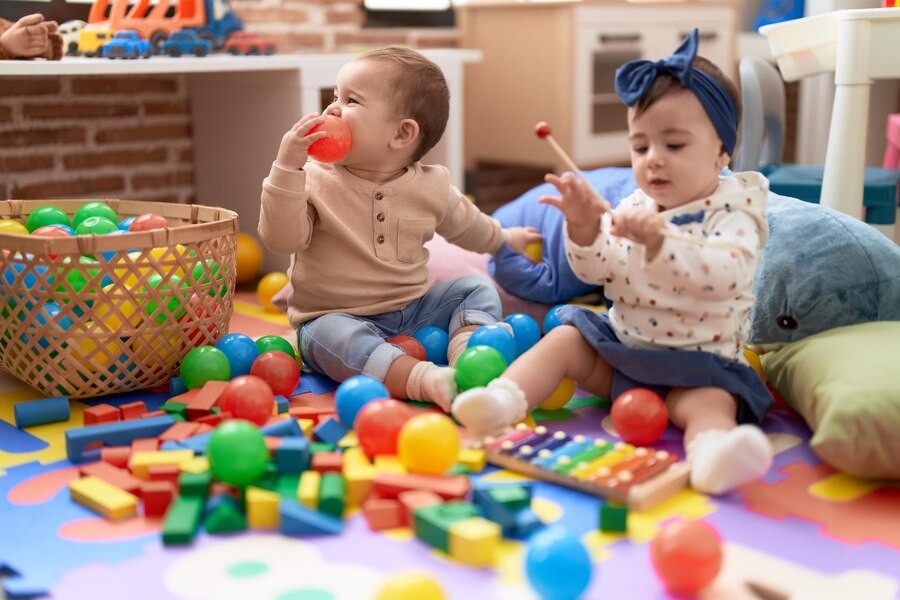Every parent would love to have an active child. However, active or hyperactive children are often suspected of having ADHD (Attention Deficit Hyperactivity Disorder), a mental disorder where children have difficulty focusing. What's the difference between an ADHD child and an active, high-energy child?
Knowing About ADHD
ADHD, or attention deficit hyperactivity disorder, is a medical condition that causes children to have trouble focusing due to unusual brain development and activity patterns. Common traits of ADHD include struggles with focusing, listening, following instructions, taking turns, and maintaining stillness.
According to Kids Health, children with ADHD typically exhibit the following symptoms:
- Inattentiveness or easy distraction, hindering task completion
- Hyperactivity, characterized by high energy levels and restlessness
- Impulsivity, leading to spontaneous actions or decisions without careful consideration
ADHD symptoms can often be identified at an early age, yet distinguishing them can be challenging as they may overlap with normal emotional development in children. If the symptoms of ADHD persist as the child grows and start impacting their school performance or social interactions, ADHD is likely present.
How ADHD differs from an active child
Hyperactivity is a symptom commonly associated with ADHD. However, in society, there's often confusion between hyperactive children and those with ADHD. It's important to note that while many ADHD children are indeed hyperactive, not all of them exhibit this trait. According to Verywell Mind, some ADHD children may display the opposite behavior, showing low energy levels instead.
Here are a few distinctions between ADHD children and high-energy children:
Fails to give close attention to details
Highly active children can typically concentrate on a task, even though they may get easily distracted. They can quickly regain focus once they realize their objective. In contrast, children with ADHD often find it challenging to maintain focus across various activities, including schoolwork.
Having Difficulty in following instructions
Children diagnosed with ADHD typically struggle to adhere to instructions or rules, whereas active children typically have little trouble following them. Additionally, ADHD children commonly face challenges in organizing or planning tasks, whereas a high-energy child may enthusiastically engage in setting schedules.
Hard to control emotions
Highly active children generally demonstrate emotional control and are less impulsive. Conversely, children with ADHD-related hyperactivity often struggle with impulse control. If your child frequently experiences challenges in managing emotions, acts impulsively, and faces difficulties in processing information, it's advisable to seek prompt medical advice.
Have social problems
Brain system disorders in children with ADHD can lead to social difficulties. Typically, highly active children do not create issues in school environments. However, hyperactive children with ADHD often exhibit resistance, leading to challenges within the community.
Based on these distinctions, an active, high-energy child might be diagnosed with ADHD if they consistently face chronic behavioral issues that are challenging to manage, particularly if they struggle to inhibit and control impulsive behaviors even after medical evaluation.
Distinguishing between active children and those who are hyperactive due to ADHD can be quite challenging. If you suspect that your child may have ADHD based on their hyperactive behavior, it's crucial to promptly seek medical advice for appropriate treatment.
If you need medical advice or consultation, you can either visit a doctor or make use of the consultation features that are available in the Ai Care application by downloading the Ai Care application from the App Store or Play Store.
Looking for more information about pregnancy, breastfeeding, and the health of women and children? Click here!
- dr Anita Larasati Priyono
Low, K. (2021). Does Your Child Have ADHD or Is It Just High Energy?. Available from: https://www.verywellmind.com/difference-between-an-energetic-child-and-one-with-ADHD-20486#
Kids Health. What Is ADHD?. Available from: https://kidshealth.org/en/parents/adhd.html#
Kolewicz, H. Does my child have ADHD or just high energy?. Available from: https://childmind.org/article/does-my-child-have-adhd-or-just-high-energy/











